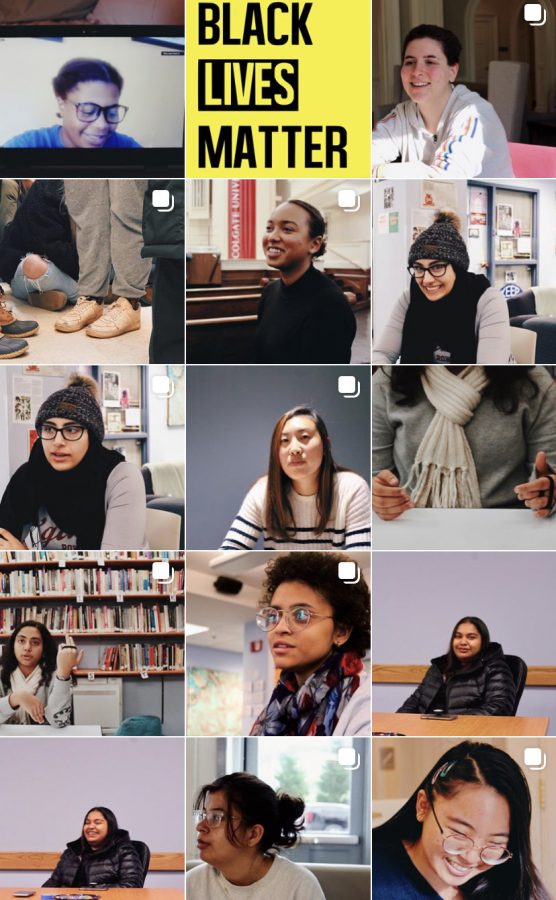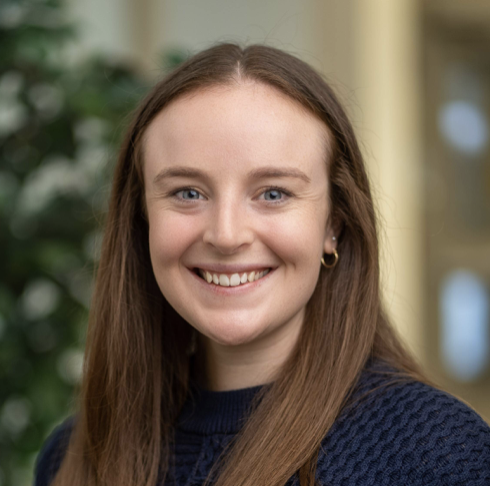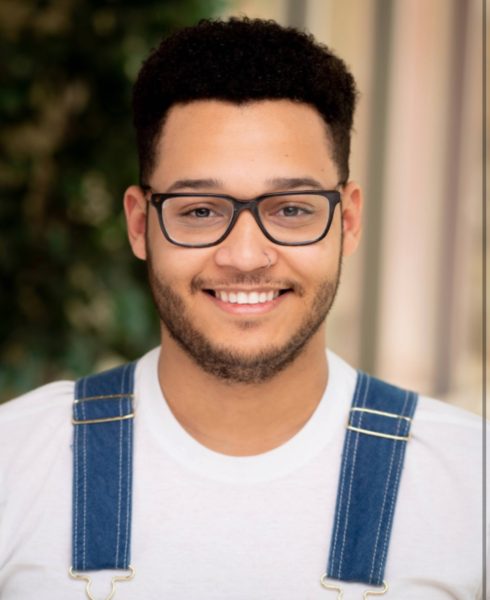Social Media’s Influence on Social Change
Social media in 2020 is drastically different from social media in 1997 when Six Degrees was first launched and arguably became the first social media site. The rise of social media coincided with the rise of accessibility of the internet, leading to today’s ubiquitous presence of sites like Facebook, Instagram, Snapchat, Twitter and TikTok. While Facebook — perhaps the first social media behemoth — was initially almost exclusively used by users as a daily journal, social media is no longer reserved for sharing users’ lunch, relationship status or new puppy. Today, social media is also used by activists like Tamika Mallory and Shaun King as well as activist organizations and movements like Black Lives Matter and Time’s Up to organize and spread information.
John Palmer, professor of educational studies and the academic director at the Office of Undergraduate Studies, teaches a course called “Race, White Supremacy and Education.” He credits social media as part of the reason why his students are coming into his class more able to discuss topics like critical race theory.
“With social media, [students are] beginning to see the reality of what antiblackness looks like. [Students] are being able to see, from Trayvon Martin to Tamir Rice to now Breonna Taylor, in real-time… You can see more and more of Colgate students coming into that Race, White Supremacy and Education class more aware of the issues, more wanting to talk about these issues, [and] not having that sense of fearfulness of saying the wrong thing,” Palmer said. “I’ve always joked that the [students] coming in, back in 2002 [and] 2003, when I first came here, [that] they didn’t even know whether they could say ‘Black’ or ‘African American.’ That was their biggest question coming [into] the class. But now, the languages are there, the rhetoric is part of them…[Students] want to know more about what critical race theory is. [Students] want to see how these theories can unlock some of the keys to bringing about antiracist pedagogy to Colgate University, to [bring] antiracist policies not just to Colgate, but to a broader society as well.”
Some scholars, like associate professor for peace and conflict studies and director of women studies Susan Thomson, don’t agree with social media sites being the driver of social change. Sites like Facebook have come under fire recently for hate speech being promoted on the site and the organization received a civil rights audit for allowing hate speech and disinformation to thrive on the site. TikTok had security flaws revealed in January 2020 that made users vulnerable to hackers and is currently facing a ban in the United States. Twitter is still trying to figure out how to differentiate between free speech and hate speech.
“I would be pretty skeptical of Facebook as a mechanism for social change. I think it does bring [the Arab Spring and the genocide of the Rohingya people in Myanmar] to the attention of an American or a Western audience… In those communities, in those places, [although] it’s local activists in consultation with communities that make those images possible. Facebook is just a medium,” Thomson said. “Serious activists are on the ground, collaborating, organizing, putting themselves at risk long before those images get to us.”
However, Thomson still credits some of the Instagram pages that have been created at Colgate for making positive change.
“I think [Share Your Story can change the culture at Colgate] because it’s the first time in my experience seeing students actually stand up for themselves in such a public way — they’ve always stood up for themselves, but [never] in such a public way. It makes it unacceptable among student networks and student communities to behave in those ways. If we took seriously the stories of survivors and decided, among students, among faculty, among staff that we were no longer a place where that kind of sexual harrasment, sexual intimidation, sexual violence, was acceptable, [then] it would change things,” Thomson said. “We see that Greek Life is implicated, so what if women just stopped going to those parties? Would the guys change? They’d have to, because it’s never just one individual, it’s the system. That’s why an account like that is so powerful, because it’s like ‘Hey, this is pervasive.’”
There is a long, rich history of student activists at Colgate. Jamiere Abney, the Coordinator of Outreach for Opportunity & Inclusion at the Office of Admission, came to Colgate three years ago and has been impressed with Colgate students’ activism throughout his time here.
“Since coming to Colgate, I have to commend students for their willingness to speak up. The summer I joined the Colgate staff was a few months after the glue gun incident. I remember asking myself what that meant for my transition to campus as a Black male. I was encouraged by how students pushed the University response and how these efforts ultimately led to key tenants within the DEI Plan that was introduced in 2019. Further, Colgate’s history of activism leading to tangible change such as the founding of ALANA, the 2015 ‘Colgate for All’ 21-point action plan and recent student protests in response to the multiple social issues this summer, all illustrate the generations of students’ activism and involvement,” Abney said.
Assistant professor of sociology Chandra Russo echoed the impact of student activism on campus. In fact, her job description was penned in response to student activism.
“The job description said… someone who studies politics and justice broadly conceived, and with an intersectional approach or something like that. And I later learned that that precise kind of language came out of that 2014-2015 speak-outs, student agitations and student organizing,” Russo said. “I think Colgate is probably similar to a lot of institutions of higher [education] in the United States, especially residential colleges, especially elite schools, [because they] are built and structured for the needs and interests of white propertied men and have long been bastions of activism, student energy, folks seeking to make something better out of the forms of dominance that are inherited.”
As Russo explained, different social contexts are designed to promote the interests of particular groups. For those who do not fall into this category, identity crafting and community building can be a form of activism and resistance.
After looking through the Instagram pages featured in this theme, Russo said, “It seems like [these accounts are] spaces for safety, comfort, support and visibility for a lot of these different identity categories, for lack of a better word. The vast majority of the Colgate campus doesn’t seem to be designed for queer-identified students, for example, to feel comfortable being loud and proud and queer.”
Social media, and other digital tools, have provided a conduit for people to connect with each other regardless of physical distance.
“Digital technologies can be a hugely powerful tool especially when for reasons of public health and bodily sanctity we have to stay apart… There are experiences of community that can in some ways be replicated online… That feature of online activism, that I also see coming out in these Instagram posts, this way of finding and fostering visible communities — communities of care — in the face of power structures that do not care for us can be really important,” Russo said.
Abney offered a glimpse into how these communities meld together to form a unified Colgate community, although it may seem a difficult puzzle to piece together.
“These communities fit because of the University’s commitment to providing an ambitious environment where students can learn from and push one another. Having students from all walks of life is important to allow that to happen. Further, what brings such different people together is a commitment to learning and wanting to deeply engage with their studies while also being part of a place where community and support are central,” he said. “Students choose a place like Colgate because they want to be somewhere that is unique, has a tradition of supporting students to reach their goals, and also because of the tight-knit nature of a residential college. So despite clear differences, inherently students are aspiring to or wanting the same thing out of college.”
Regardless of the ethics of companies like TikTok and Facebook, it is undeniable that they have connected communities and brought awareness to pervasive issues that might have gone unnoticed by the American public in the past.
“[Going] back to 1988, how many students in my first-year classroom on multicultural education would have even heard a name like Breonna Taylor if it doesn’t make the national [news]? We were small-town kids from Iowa. We might not have ever heard of Breonna Taylor. We may never have heard of Trayvon Martin or Tamir Rice or Sandra Bland. We may not have heard of [them] without social media,” Palmer said. “Social media has connected us to many of these issues. Now, it’s like you have to actively avoid these issues… if you’re saying that racism [and] white supremacy doesn’t exist in America.”
Social media has increased awareness and started active dialogues about injustice, but there is still a lot of work to be done to turn this conversation into meaningful and lasting change.









